The history of Korosten dates back to the distant 5-7th century AD.
On two sides of the picturesque banks of the winding river Uzh, a tributary of the Pripyat, on ancient rocks, among the free green oak forests, there is a beautiful city of Korosten (Iskorosten).
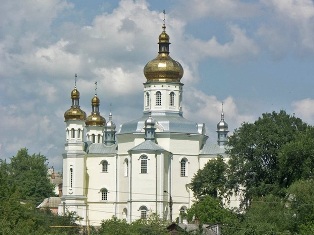 The flower depicted in the center of the city’s coat of arms is flax, which has long been grown in Polissya; the snake symbolizes the Uzh river, which adorns the city of Korosten, stretching on both sides, with its winding banks.
The flower depicted in the center of the city’s coat of arms is flax, which has long been grown in Polissya; the snake symbolizes the Uzh river, which adorns the city of Korosten, stretching on both sides, with its winding banks.
Today Korosten is a city of regional subordination, the center of the district, a large junction railway station, a large industrial center of Ukraine. Korosten is located on the Uzh River, a tributary of the Pripyat, 90 km north of Zhitomir, 60 km from the border with the Republic of Belarus and 150 km from Kiev.
The history of Korosten is rooted in the depths of millennia. Even during the Paleolithic era, one of the largest deposits of flint in Europe attracted primitive people here. The oldest stone tools found here were made by human hands more than 10 thousand years ago. When exploring the territory of the city, which began in 1887. the famous archaeologist VB Antonovich, a number of remains of Neolithic settlements were found, traces of original workshops where tools were produced in the Bronze Age. The first traces of the presence of Slavic tribes in our region date back to the 5th-7th century AD. Then a number of small Slavic settlements arose in the valley of the Uzh River. On the basis of one of them, located on high granite rocks, the city of Korosten (Iskorosten) arose.
The city became the center of the Drevlyans – a powerful and numerous East Slavic tribe. As the historical chronicle testifies, at the beginning of the 10th century Iskorosten was a powerful fortress. Fenced in by a strong palisade made of rough, centuries-old oak trunks, the fortress was the permanent residence of Prince Mal. Hence the first name of the settlement of Iskorosten appeared – from the bark-wall.
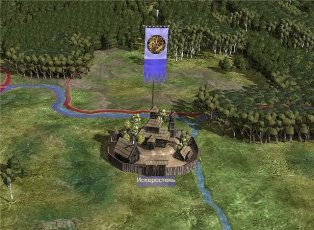 With the creation of the feudal state of Kievan Rus, the Drevlyan land was one of the first to become part of it. The Kiev prince Oleg subdued and imposed a tribute on the Drevlyans in 883, and in 907 they already participated in the victorious campaign against Byzantium. Under the rule of their princes, the Drevlyans stubbornly fought for independence from the Kiev princes. In 913, after the death of Prince Oleg, they refused to pay tribute to his heir Igor. In 914, Igor conquered them again. However, the Drevlyans continued to fight against Igor and his henchmen even later. Year 945. Prince Igor of Kiev walks through the lands of the Slavic tribes subordinate to him to collect annual tribute. He walks with an armed and numerous retinue, for it is not easy for the Slavs to give back the goods acquired by back-breaking labor. And although Igor is no stranger to resorting to force and cruelty, it is still not easy. Each time the prince needs more and more. Campaigns to Byzantium and Greece, protection from the Pecheneg raids, the conciliation of negligent tribes in order to save the state from disintegration: all this requires money and a lot.
With the creation of the feudal state of Kievan Rus, the Drevlyan land was one of the first to become part of it. The Kiev prince Oleg subdued and imposed a tribute on the Drevlyans in 883, and in 907 they already participated in the victorious campaign against Byzantium. Under the rule of their princes, the Drevlyans stubbornly fought for independence from the Kiev princes. In 913, after the death of Prince Oleg, they refused to pay tribute to his heir Igor. In 914, Igor conquered them again. However, the Drevlyans continued to fight against Igor and his henchmen even later. Year 945. Prince Igor of Kiev walks through the lands of the Slavic tribes subordinate to him to collect annual tribute. He walks with an armed and numerous retinue, for it is not easy for the Slavs to give back the goods acquired by back-breaking labor. And although Igor is no stranger to resorting to force and cruelty, it is still not easy. Each time the prince needs more and more. Campaigns to Byzantium and Greece, protection from the Pecheneg raids, the conciliation of negligent tribes in order to save the state from disintegration: all this requires money and a lot.
The turn has come to pay the Drevlyans. They called them that because they live between the “trees”, tk. their land is completely covered with dense and dense forests. And the very capital of the Drevlyansky Iskorosten (Korosten) is built of wood, and the city walls are surrounded by an oak palisade, rough, right with bark. That is why it is called so: Is-short-wall, a city “made of bark on the wall.” The fortress is formidable, and the people, though appealing and courteous in appearance, but “on their own mind”, do not painfully respect the prince of Kiev.
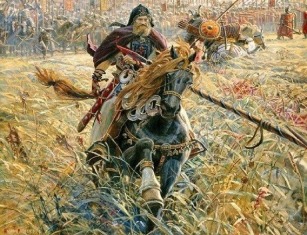 Yes, and their leader himself, Prince Mal, “a tough nut to crack”, is still waiting for an opportunity to return to the tribe the independence taken from them by Oleg, Igor’s predecessor. The prince feels how indignant this tribe is for him, the battles of 914 have not been forgotten, when Igor had to suppress the uprising of the Drevlyans with fire and sword …. Every time we must keep our eyes open. But this is a worthwhile business. This land is too rich, it presents generously with furs, honey, leather and linen fabrics. Yes, and there is silver, because the city is located just at the crossroads of trade routes. So this time we managed to collect a lot. But Igor is dissatisfied, he sees that the rent is not so difficult for the Drevlyans, he feels that he’s cheapened, he could have taken more. After some thought, the prince stops halfway to Kiev. He releases part of the squad with good to the capital, and he himself, with another squad, returns to Iskorosten to demand an additional payment from the Drevlyans.
Yes, and their leader himself, Prince Mal, “a tough nut to crack”, is still waiting for an opportunity to return to the tribe the independence taken from them by Oleg, Igor’s predecessor. The prince feels how indignant this tribe is for him, the battles of 914 have not been forgotten, when Igor had to suppress the uprising of the Drevlyans with fire and sword …. Every time we must keep our eyes open. But this is a worthwhile business. This land is too rich, it presents generously with furs, honey, leather and linen fabrics. Yes, and there is silver, because the city is located just at the crossroads of trade routes. So this time we managed to collect a lot. But Igor is dissatisfied, he sees that the rent is not so difficult for the Drevlyans, he feels that he’s cheapened, he could have taken more. After some thought, the prince stops halfway to Kiev. He releases part of the squad with good to the capital, and he himself, with another squad, returns to Iskorosten to demand an additional payment from the Drevlyans.
The Drevlyans saw the return of the prince and were deeply indignant from such impudence. The cup of patience was overflowing, blood boiled, is it not time to teach the prince of Kiev to honor Slavic customs and their dignity? And they send messengers to meet Igor: “Why are you returning, if the tribute has been paid in full?” But he did not even listen to them, this is not their business. And the Drevlyans came to their prince Mal for advice. And on reflection, they concluded the following: “If the wolf has already got into the habit of the sheep, it will drag them one by one, and if it is not killed, it will not stop until the whole flock has eaten. So it is with this man: if we do not kill him today, then then he will destroy us all. ” And Prince Mal raised the city of Iskorosten against Prince Igor. And they fought. And the Kiev squad was defeated, and Igor himself was taken prisoner. And so that others would not be accustomed to trample on Slavic customs and reach out to the Drevlyan land, they decided to execute him with a cruel and exemplary death. We found two young birches growing nearby, tilted and tied them to the feet of Prince Igor, and then released them. The trees straightened in an instant, dismembering the body of the prince in two … Looks like this was this terrible message: “We were able to bow before you, honoring your greatness and superiority. and you can’t put together your own parts! ” They buried him, nevertheless, with all the honors, according to the princely custom, and they poured a high mound on his grave. And the nearby village was called Mogilnoe for many centuries, because here is the Tomb of Prince Igor (now it is the village of Polesskoe).
 The terrible news of the rebellion and death of the prince reached Kiev and sowed indignation and fear in the capital: the state of 20 principalities for some time was left without a supreme ruler. After Igor, only his young son Svyatoslav and Princess Olga, Igor’s widow, remained. (the same Grand Duchess Olga, who 10 years later would become the first Christian in Russia, long before her grandson Vladimir Svyatoslavovich christened Russia in 988). And there was confusion in the capital of Russia: what to expect now, because the only heir to the throne was only 3 years old. How could the Drevlyans miss such an opportunity in order to finally get rid of subordination to Kiev! They decide to persuade Olga to marry their prince Mal, in order to gain superiority over Svyatoslav in this way and exercise their will in Kiev. And they send 20 of their best husbands on a boat to the capital for negotiations.
The terrible news of the rebellion and death of the prince reached Kiev and sowed indignation and fear in the capital: the state of 20 principalities for some time was left without a supreme ruler. After Igor, only his young son Svyatoslav and Princess Olga, Igor’s widow, remained. (the same Grand Duchess Olga, who 10 years later would become the first Christian in Russia, long before her grandson Vladimir Svyatoslavovich christened Russia in 988). And there was confusion in the capital of Russia: what to expect now, because the only heir to the throne was only 3 years old. How could the Drevlyans miss such an opportunity in order to finally get rid of subordination to Kiev! They decide to persuade Olga to marry their prince Mal, in order to gain superiority over Svyatoslav in this way and exercise their will in Kiev. And they send 20 of their best husbands on a boat to the capital for negotiations.
Olga received them hospitably. And the Drevlyans told what their tribe had sent to explain to the princess how her husband Igor had become like a greedy and disheartened wolf who had lost his mind and measure, but, on the contrary, their princes were always famous for wisdom and patience, and how well they governed the Drevlyan lands, and that their Prince Mal would be a worthy and reliable support for her. Olga listened to them courteously and said that their words were to her liking, because her husband Igor would no longer rise from the grave, but she had to think about the future. However, she added that she wanted to show them special honors in the eyes of her people and that they would return to their boat and wait there with a proud and majestic air. And when the next day her messengers come for them, so that they refuse to go either on foot or on horseback, but that they be carried to her right in their boat. That’s why Olga took them home. Without wasting time, the princess immediately ordered to dig a huge hole with an exit to the city. Even before the sun rose, the order was properly executed. In the morning Olga sent for the Drevlyans. The messengers approached the boat and informed the Drevlyans that the princess was waiting for them and prepared special honors for them. But they, as agreed, stood proudly and replied that they would not go either on foot or on horseback, and that they would be taken to her along with the boat. The people of Kiev were outraged because they should honor the people who killed their prince, and now they also want to rule over their princess. However, her will was carried out and carried in the arms of the Drevlyans in their own boat to the city. But when the procession approached, Olga ordered to throw the boat directly into the hole. The princess bent over them, asking how the “honors” were shown to them. Finally, the Drevlyans understood what was the matter and answered: “Oh, princess, this is much worse than Igor’s death itself!” And the princess ordered the princess to fill the pit, and they were buried alive. Then Olga sends a message to Iskorosten to send more noble men from the city, so that Kiev can see how great the desire of the Drevlyans to make her their princess, and that she should go to their prince with a double honor otherwise the people of Kiev will not let her go. And the Drevlyans hastened to fulfill the will of the princess. They immediately chose their best and most worthy rulers and sent them to Kiev. The messengers appeared before the princess. First of all, she invites them to the bathhouse prepared in advance so that they can relax on the way. As soon as the Drevlyans entered there, Olga’s servants shut the doors tightly behind them and set them on fire. And so they burned down alive.
After that, Olga ordered to immediately gather a squad and oppose the city of Iskorosten. She takes Svyatoslav with her on a campaign so that her son can take part in revenge for the death of his father. The army entered the Drevlyan land. Everything is ready for battle, the squad is just waiting for the signal of the prince. Olga salutes this honor to Svyatoslav, and gives him the first arrow. However, the kid just dropped it at the feet of his horse. But for a devoted army, this is enough: only an arrow touched the ground, the soldiers rushed to the attack … That is why they believe that this was the first battle of Prince Svyatoslav. The whole summer Olga stood with her retinue at the uncouth walls of the besieged Iskorosten. More than once she tried to take the fortress by attack, many soldiers fell, but the city was too strong for the people of Kiev. Time was running out, strength was running out. But the wise Olga knew that the Drevlyans were also tired of the war, they were by nature labor, not warriors. Therefore, where one cannot take by force, one must take by cunning. And the princess announced to the city of Iskorosten that she forgave him and arranged a funeral feast for Prince Igor on Red Hill. Many believed and went out of the city walls to feast with the princess. But an ambush awaited them all … And the Red Hump turned red with blood. 5 thousand Drevlyans fell in this massacre.
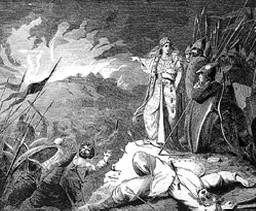 Olga again turned to the Drevlyans and said that now her revenge was satisfied, only let the city pay her an easy tribute, only three pigeons and three sparrows from each house and she would leave them alone. Maybe the Drevlyans felt a catch, but the desire for peace, the desire to put an end to this war, was too great. And they agreed with great joy.
Olga again turned to the Drevlyans and said that now her revenge was satisfied, only let the city pay her an easy tribute, only three pigeons and three sparrows from each house and she would leave them alone. Maybe the Drevlyans felt a catch, but the desire for peace, the desire to put an end to this war, was too great. And they agreed with great joy.
The dove is a peaceful bird, faithful to its home, wherever it flies, it always returns to its hearth, bringing good news on its wings. But Princess Olga intended the birds brought from Iskorosten not for good news. She ordered to make wicks from the clothes of those killed on the Red Hump, tie them to the paws of pigeons, light them and release them. And peaceful, naive birds, following their eternal instinct, immediately went to their homes, carrying fire to their native roofs. The wooden city burst into flames in an instant, there was not a single house left that was not engulfed in fire. An insatiable flame engulfed him, engulfing everything from the bark on the walls to the weather vane on the towers. Those who managed to escape from the fire fell into the merciless hands of the Kiev soldiers. Olga ordered the captive rulers of the city to be executed, and whom to give into slavery to the vigilantes. From now on, the Drevlyans will be obliged to pay a much larger tribute to Kiev, and a fourth of it will be sent personally to Olga to her residence in Vyshgorod. So the rebellious Drevlyansky capital, the glorious city of Iskorosten, in just one night turned to ash. By order of the princess, it was forbidden to restore the city and even settle in the vicinity of this place.
For many years Iskorosten was erased from history. But time passed and people nevertheless returned here, settlements began to arise, gradually forming a new city. Favorable geographical position and the availability of rich resources for a long time determined its transition to different principalities, counties, and voivodships.
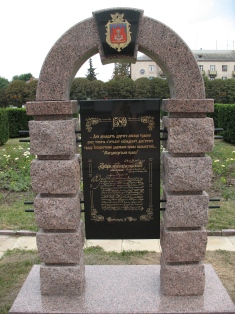 After the division of Russia as a result of the formation in 1157 of the Vladimir-Suzdal and the Grand Duchy of Moscow (1260-70), Iskorosten remained under the jurisdiction of the Kiev princes. Since 1243 Mongol-Tatars have been dominating here. In 1348 and 1370, the Grand Duke of Lithuania Algirdas Olged defeated the Teutonic Order and, pushing back the Tatars, annexed these lands to the Grand Duchess of Lithuania. Later he gives them to one of his knights Terekh (from Bryansk) for faithful service. Since 1385, after the formation of the Krevo Union, this territory falls under the influence of Poland. In 1586, the wealthy Polish magnate Prokop Mrzhevitsky, having married one of Terekh’s heirs, became the owner of Iskorosten. He manages to get the Polish king to confer the status of a city on this small fortress. May 22, 1589 Sigismund III gives the city of Iskorosten the Magdeburg Law providing for self-government and the rights of citizens.
After the division of Russia as a result of the formation in 1157 of the Vladimir-Suzdal and the Grand Duchy of Moscow (1260-70), Iskorosten remained under the jurisdiction of the Kiev princes. Since 1243 Mongol-Tatars have been dominating here. In 1348 and 1370, the Grand Duke of Lithuania Algirdas Olged defeated the Teutonic Order and, pushing back the Tatars, annexed these lands to the Grand Duchess of Lithuania. Later he gives them to one of his knights Terekh (from Bryansk) for faithful service. Since 1385, after the formation of the Krevo Union, this territory falls under the influence of Poland. In 1586, the wealthy Polish magnate Prokop Mrzhevitsky, having married one of Terekh’s heirs, became the owner of Iskorosten. He manages to get the Polish king to confer the status of a city on this small fortress. May 22, 1589 Sigismund III gives the city of Iskorosten the Magdeburg Law providing for self-government and the rights of citizens.
During this era, the Grand Duchy of Moscow expanded and strengthened. Moscow has been declared the capital of the unified Russian state, and the territories of the former Kievan Rus are already on the outskirts of the Russian lands and they are now called Ukraine (located “at the edge” of the borders). Ukraine with its rich resources is a temptation for many states: Poland – from the west, Turkey – from the south, Lithuania and Sweden – from the north. In response to all these claims, a military-political order – the Cossacks – is emerging in Ukraine. In the very heart of feudal Eastern Europe, an unprecedented democratic structure is emerging – the Zaporizhzhya Sich, which takes care of protecting the territory, the nation and the Orthodox Christian faith. For centuries, the Cossacks have waged fierce wars for independence against the Poles, Turks and Crimean Tatars.
In 1649, a detachment of Cossacks under the command of Geraska, after a bloody battle, liberates Iskorosten from the Polish gentry. The city fortifications were completely destroyed. In 1654, Hetman Bogdan Khmelnitsky, as a result of the Pereyaslav Rada, signed an agreement with the Russian Tsar Alexei Mikhailovich on the transfer of Ukraine to the jurisdiction of Russia. However, from 1667 to 1795, the lands of Iskorosten continue to be part of the Polish-Lithuanian Commonwealth.
In 1795 Iskorosten passed to the Russian Empire as the center of the Iskorosten volost of the Ovruch district of the Volyn province. For a long time it was a quiet, inconspicuous provincial town. A note from the newspaper “Volyn Eparchial Vedomosti” from 1888 has survived, where they write about him: “Now Iskorosten is a poor, insignificant town inhabited by Jews and peasants-grain growers.”
The life of Iskorosten residents changed dramatically with the construction of the Kiev-Kovel railway in 1902. At the beginning of the 20th century, over three thousand people lived in Iskorosten. There were several small enterprises in it: furniture, mechanical and leather workshops, a porcelain factory. The city became the site of many events during the revolution and civil war. During the first Russian revolution, the workers of Iskorosten supported the strike. And in November 1917, together with the revolutionary soldiers, they established Soviet power (At this time, the city was renamed Korosten). November 18, 1917 station duty officer L.M. Tabukashvili at a rally held on Barachnaya Square announced the establishment of Soviet power.
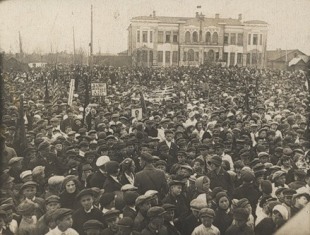 On February 12, 1918, at a meeting of the Small Council in Korosten, a law was approved on the introduction in the Ukrainian People’s Republic of a new Gregorian (currently operating) calendar, on the transition to the Central European (currently operating) time, approved the sign of the Kiev State – a trident as the coat of arms of the UNR. At the end of February, the Kaiser’s troops entered the city. From July 15, 1918. Korosten is one of the centers of the All-Ukrainian strike of railway workers. After the retreat of the Germans from Ukraine in the next 1919. the city was liberated by the troops of the UPR. On February 18, a Red Army division entered Korosten. On March 15, 1919, the troops of the UPR entered the city again. On April 7, 1919, the Bogunsky and Tarashchansky regiments of the Red Army entered the city. On April 26, 1920, the city was captured by Polish troops. On June 20, Korosten liberated units of the 1st Cavalry Army, but in September the Poles again captured the city. On October 12, 1920, after many days of battle, the Red Army finally liberated the city. In 1921, the capture of Korosten was the main goal of the campaign by the troops of the UPR under the leadership of General cornet Yu Tyutyunnik. On the night of November 7, 1921. on the outskirts of the city a desperate four-hour battle ensued – the last battle of the civil war in Ukraine and Korosten was again liberated by the Red Army.
On February 12, 1918, at a meeting of the Small Council in Korosten, a law was approved on the introduction in the Ukrainian People’s Republic of a new Gregorian (currently operating) calendar, on the transition to the Central European (currently operating) time, approved the sign of the Kiev State – a trident as the coat of arms of the UNR. At the end of February, the Kaiser’s troops entered the city. From July 15, 1918. Korosten is one of the centers of the All-Ukrainian strike of railway workers. After the retreat of the Germans from Ukraine in the next 1919. the city was liberated by the troops of the UPR. On February 18, a Red Army division entered Korosten. On March 15, 1919, the troops of the UPR entered the city again. On April 7, 1919, the Bogunsky and Tarashchansky regiments of the Red Army entered the city. On April 26, 1920, the city was captured by Polish troops. On June 20, Korosten liberated units of the 1st Cavalry Army, but in September the Poles again captured the city. On October 12, 1920, after many days of battle, the Red Army finally liberated the city. In 1921, the capture of Korosten was the main goal of the campaign by the troops of the UPR under the leadership of General cornet Yu Tyutyunnik. On the night of November 7, 1921. on the outskirts of the city a desperate four-hour battle ensued – the last battle of the civil war in Ukraine and Korosten was again liberated by the Red Army.
In March 1923, the history of Korosten received a new round of development – the settlement became an urban-type settlement, and from January 1, 1926 it was given the status of a city. In 1926, the premises of the Franko Drama Theater were built, in 1927-1929, on the basis of the former Osterman workshops, the Oktyabrskaya Kuznitsa plant was built, in 1928, after reconstruction, a porcelain plant began to work. In 1930, two secondary specialized educational institutions were opened – a medical technical school and a technical school of Soviet construction, two evening workers of the faculty – the Kiev Machine-Building Institute and the Kharkov Institute of Railway Engineers.
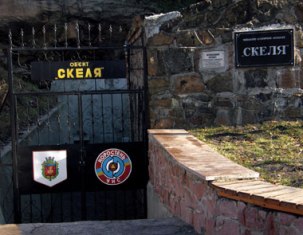 During the Second World War, during the German attack on the Soviet Union, Korosten, as a major railway junction, was subject to intense and continuous bombing by German aircraft from the first hours of the war. Despite the destruction and losses, the railway worked without stopping, supplying the front with reinforcements, equipment and ammunition, and evacuating the wounded and the civilian population. In addition, Korosten is the most important stronghold in the defense system of Kiev. A strategic defense line (the famous throughout Ukraine object “Skala” with fortified areas), designed by the legendary general Karbyshev, passed near the city. It was here, thanks to the heroic resistance of the Fifth Army of General Potapov, that the offensive of Hitler’s troops was delayed for a whole month. The number of losses on both sides was measured in tens of thousands.
During the Second World War, during the German attack on the Soviet Union, Korosten, as a major railway junction, was subject to intense and continuous bombing by German aircraft from the first hours of the war. Despite the destruction and losses, the railway worked without stopping, supplying the front with reinforcements, equipment and ammunition, and evacuating the wounded and the civilian population. In addition, Korosten is the most important stronghold in the defense system of Kiev. A strategic defense line (the famous throughout Ukraine object “Skala” with fortified areas), designed by the legendary general Karbyshev, passed near the city. It was here, thanks to the heroic resistance of the Fifth Army of General Potapov, that the offensive of Hitler’s troops was delayed for a whole month. The number of losses on both sides was measured in tens of thousands.
On August 7, 1941, the black days of the occupation began in the history of Korosten and the Korostenists. But the city did not capitulate. On the territory of Korosten and the region, groups of underground fighters and partisan detachments operated, causing significant damage to German troops, destroying soldiers and officers, blowing up bridges and warehouses, and paralyzing train movements. The Nazis brutally dealt with the patriots. During the occupation, 16,733 people were shot in the city, 15 people were hanged and 1803 people were taken to Germany for forced labor.
During the 1943 offensive as a result of the Kiev operation, the Red Army liberated Korosten on November 17, but the German command could not afford to lose such an important strategic point. German troops, in the course of a powerful tank counteroffensive, supported by aviation and artillery, again captured the city, despite the persistent resistance of the defending garrison. Korosten remembers and honors the memory of his defenders who died with many monuments and street names. And the exploits of the soldier Abdula Usenov, who at the cost of his life stopped the German tanks, and the pilot Polyakov, who rammed in the sky over Korosten, are recorded in the annals of the History of the Great Patriotic War. Both were posthumously awarded the title of Hero of the Soviet Union. However, the names of many heroes who rest in the Korosten land are unknown to this day. An undisclosed secret and a topic for research remains the feat of the soldiers of the dungeon of the old fortress over the Uzh … On December 28, 1943, the city was finally liberated by units of the 13th Army of Lieutenant General Pukhov.
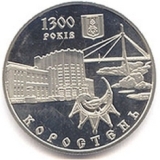 As a result of the war, Korosten was completely destroyed again. But this city is no longer used to it. As in all times, it was gradually reborn from the ashes again. After the war years, the restoration of the almost completely destroyed city began. By May 1945, the railway junction and the porcelain factory were fully operational. In 1947, the Oktyabrskaya Kuznitsa plant began production again. In 1949, the Torfmash plant was built (since 1961, Korostenkhimmash). In 1960, a reinforced concrete sleepers plant was put into operation, and in 1964 – a cotton spinning mill. In 1966, a children’s sports school was opened, and in 1970, the House of Culture of Railway Workers with 850 seats.
As a result of the war, Korosten was completely destroyed again. But this city is no longer used to it. As in all times, it was gradually reborn from the ashes again. After the war years, the restoration of the almost completely destroyed city began. By May 1945, the railway junction and the porcelain factory were fully operational. In 1947, the Oktyabrskaya Kuznitsa plant began production again. In 1949, the Torfmash plant was built (since 1961, Korostenkhimmash). In 1960, a reinforced concrete sleepers plant was put into operation, and in 1964 – a cotton spinning mill. In 1966, a children’s sports school was opened, and in 1970, the House of Culture of Railway Workers with 850 seats.
In the 80-90s of the 20th century, the history of Korosten was written in bitter lines – the city had to go through difficult times. The proximity to the Chernobyl Nuclear Power Plant (90 km) has left a new tragic imprint on its history. Korosten got into the zone of radioactive contamination as a result of the Chernobyl nuclear disaster on April 26, 1986 and is classified as a “zone of guaranteed voluntary resettlement.” Korosten is the largest settlement on the territory of the zones affected by the Chernobyl accident.
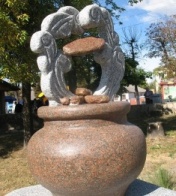 But this tragedy did not stop the development of the city. After a short-term resettlement of the city’s residents to other regions of Ukraine, the life of the city resumed at the same level. Houses are being built in Korosten again, roads are being repaired, children are being born. Today Korosten is a wonderful corner of the Ukrainian Polesye in the Zhytomyr region – a large transport hub of the South-Western Railway. It is glorified for amber rosin resins, products of a mechanical plant, reinforced concrete products, chemical engineering, woodworking industry and other enterprises. The first in Ukraine modern plant for the production of MDF boards began operating in the city. In 2005, thanks to the archaeological excavations of scientists, Korosten celebrated his 1300th anniversary. Since 2008, the city has been holding an all-Ukrainian holiday-fair “Potato Day”, to which even foreign tourists come.
But this tragedy did not stop the development of the city. After a short-term resettlement of the city’s residents to other regions of Ukraine, the life of the city resumed at the same level. Houses are being built in Korosten again, roads are being repaired, children are being born. Today Korosten is a wonderful corner of the Ukrainian Polesye in the Zhytomyr region – a large transport hub of the South-Western Railway. It is glorified for amber rosin resins, products of a mechanical plant, reinforced concrete products, chemical engineering, woodworking industry and other enterprises. The first in Ukraine modern plant for the production of MDF boards began operating in the city. In 2005, thanks to the archaeological excavations of scientists, Korosten celebrated his 1300th anniversary. Since 2008, the city has been holding an all-Ukrainian holiday-fair “Potato Day”, to which even foreign tourists come.
Meanwhile, new hotels and recreation and catering establishments appear in Korosten, because the flow of tourists is increasing from year to year. In addition to the well-known international festival of potato pancakes, the city also hosts the Princely Decline festival with the reconstruction of battles, a literary holiday for writers and readers “Just for the Pokrovu”, and also many historical and archaeological conferences that gather well-known scientists.
Korosten is especially beautiful in autumn, when the park is decorated with colorful trees, and the incredible landscapes of the city open from the observation platforms. Therefore, plan your trip to Korosten – you will definitely not regret it.

The town of Korosten has something to be proud of. But most importantly, most of all, this wonderful city is glorified by people – the descendants of the ancient Drevlyans.
Study the history of Korosten, write the history of the city together with the inhabitants of this Drevlyansky region and be sure to visit!
